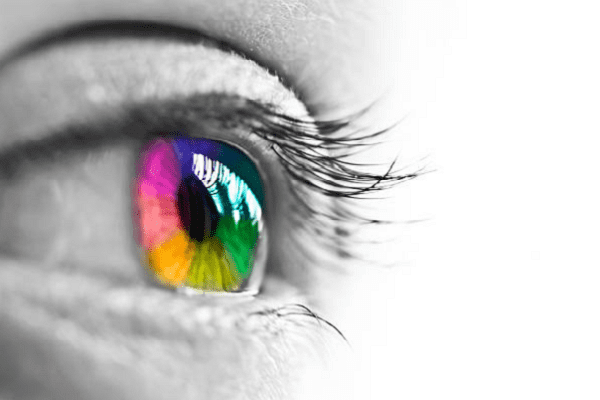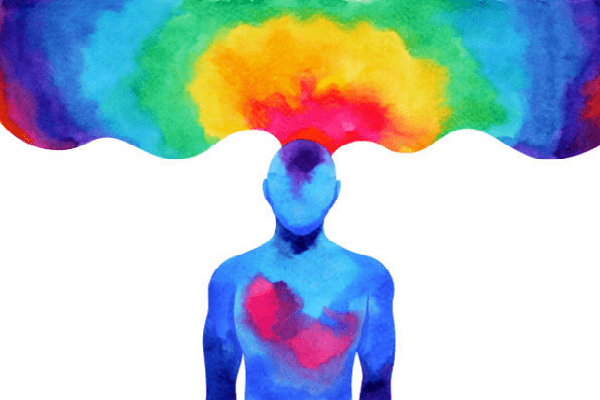Health for a lifetime >>>> How does color affect a person health and well-being?
How does color affect a person health and well-being?

The well-known fact that the human visual apparatus gets tired of contemplating color is not always taken into account when it comes to health. General well-being can suffer greatly just from the fact that the eyes of a person have to contemplate every second the colors that play the role of irritants.
Human vision is so arranged that it sees the color gamut, that is, the entire spectrum of light. This allows you to diversify your life by surrounding yourself with household items of different colors. But color is different when it comes to the reaction of the nervous system to such an irritant as color. The nervous system is especially irritated by color contrasts and too bright shades, which the visual apparatus converts into nerve impulses that excite the activity of the brain to one degree or another, and already it creates pleasant or unpleasant impressions from what he sees.

What effect does color have on well-being and health? It is known that the brightness of the color has an exciting effect, and the muted color tones create a feeling of relaxation. Transitional color shades always have a more favorable effect on the nervous system than rich, dense color tones.
Red and Orange colors create the highest degree of excitation of the nervous system, activate the cardiovascular activity, create a burst of energy, followed by a burst of vivacity, physical and mental activity. Reds and oranges in thick hues create a festive feeling. But for a long time, this state begins to tire the nervous system, and after it, introduce the body into a stressful state, followed by excitement, irritability, an explosion of emotions. To surround yourself with only these colors means to create a state of continuous excitement and exhaustion for your own nervous system. Bright reds and oranges can be incorporated into the environment as islands that delight and create a mood. Red and Orange color in large quantities is useful for people suffering from depression, dispiritedness, reduced vitality, arterial hypotension . These colors do not create opportunities for relaxation, support stress, conflict and irritability.
Yellow excites the nervous system no less than Red and Orange. This color activates the digestive and endocrine systems, creates unstable blood pressure. People suffering from sleeplessness, who do not have the opportunity for a long rest, are not recommended to get involved in the Yellow color in their environment. But to create a mood, a quick transition from sleep to wakefulness, to relieve fatigue, Yellow is indispensable. It is with this color that it is recommended to start the morning and surround yourself during periods of short sunny days, for example, use sets or table setting with Yellow shades of dishes, as this color imitates sunlight.
Black is a transitional color that has a dual effect. On the one hand, the black color is able to protect vision, giving it a rest, as it imitates the night, and therefore is able to create rest for the nervous system. Black color streamlines the work of the nervous system, generates a sense of security. Black color is useful for relaxation and a quick transition to sleep. But in long and large doses, the Black color acts depressingly, suppresses the functioning of the nervous system, can spoil the mood and provoke depression . The reverse side of the action of the Black color is a depressed mood, unmotivated gloom and a breakdown. The contrast of Black and Gray, as well as the contrast of Gray and White creates relaxation, the contrast of Black and White is tiring. But if you create bright Red, Orange and Yellow accents in a gloomy Black color setting, then Black can be used in your environment.
White and Gray colors are neutral for the functioning of the nervous system, they create a feeling of serenity, the breadth of the surrounding space, do not tire the eyes, do not excite the nerves, and reduce anxiety. At first glance, an almost colorless environment allows the brain to paint vivid pictures for itself. White and Gray tones activate creative processes in the brain, develop intellect, as they enable higher nervous activity to create images of what a person does not observe around him, but has ever seen or thought of, thus filling the colorless environment. Several bright contrasting shades against the background of White - Gray colorlessness evoke a feeling of calmness and balance.
Beige and Brown colors are very close in their effect on the nervous system to White and Gray. They create the possibility of physical relaxation and stress relief, relieve stress at work in conditions of high intellectual activity. These colors soothe, but do not depress, create a balance of internal tension and relaxation. Beige and Brown colors are useful for relieving tension in internal organs, as they indirectly relax smooth muscles, but in the absence of appetite, they will not benefit the body. For this reason, Beige and Brown are diluted with spectacular contrasting colors, such as Violet, Lilac, Burgundy, Orange, Yellow or Green.
Green color has earned the name of a pacifying color due to its peculiarity to relieve the tension of the nervous system, that is, a stressful state, bad mood, irritability. Green is inherently very close to Blue and Light blue, which are also capable of resting the nervous system. Green, Blue and Light blue colors are used for complete relaxation, inhibition of nervous excitement. These colors do not need contrasting shades, as they themselves play the role of healing the nervous system, generate energy reserves and create a “depot” of strength for future energy expenditure on stressful loads. On the contemplation of Green, Blue and Light blue colors, the eyes rest, the peripheral nervous system rests, the brain gets rid of the foci of nervous overexcitation.

To improve the health of the body and improve overall well-being, it is very useful to switch vision from the contemplation of one color to the contemplation of another color. By manipulating the color scheme, you can significantly improve your well-being not only psychologically, but also normalize the course of physiological processes. This creates a feeling of celebration, good mood and relaxation. And behind them will come high performance and healthy fatigue.

Read

Read



























